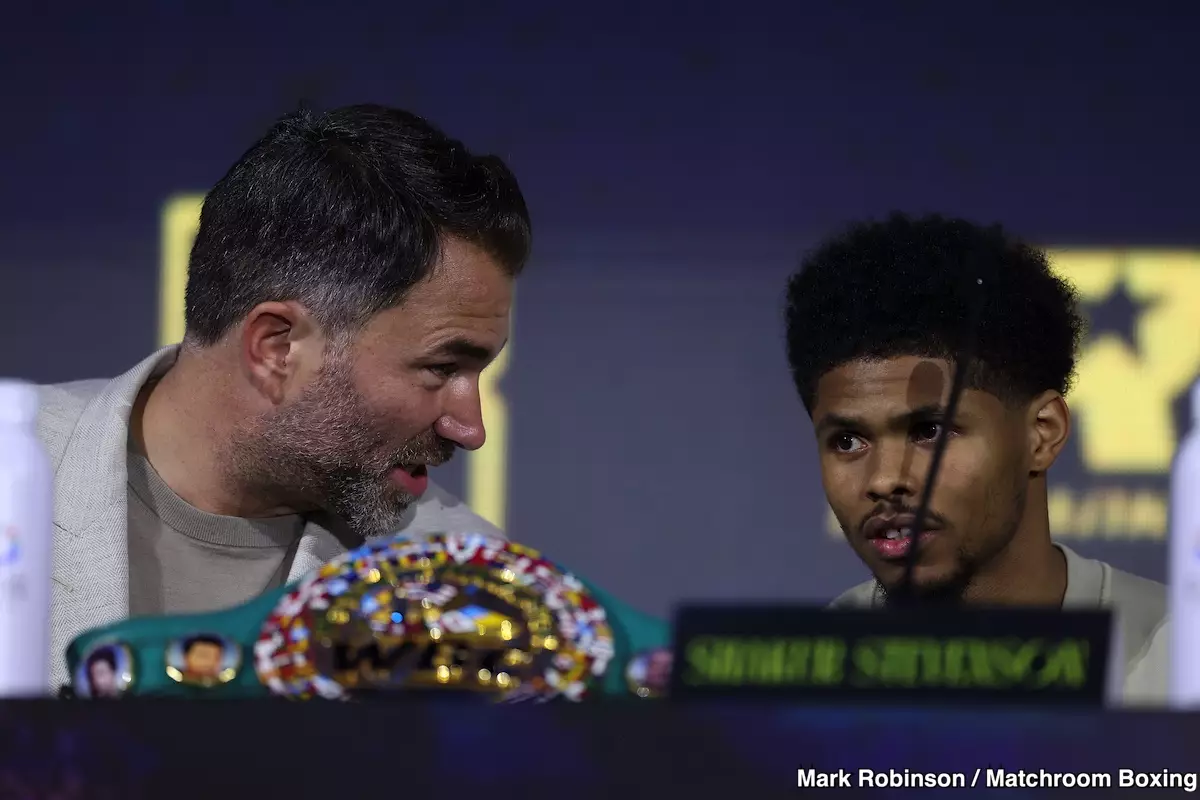Eddie Hearn, a prominent promoter in the boxing industry, stirred the pot during a recent press conference by showering accolades on Shakur Stevenson, likening him to the legendary Sugar Ray Leonard. While such a comparison might be appealing for promoting a fighter, it raises a plethora of questions regarding the validity and accuracy of placing a contemporary athlete alongside a historical great. In doing so, we need to dissect the context, skill sets, and overall careers of each fighter to better appreciate their respective journeys within the sport.
Hearn’s praise comes under a critical lens when we consider the totality of Leonard’s career. Sugar Ray was not only a three-division world champion but a dynamic athlete who consistently faced the best opponents of his time. By the age of 27, Leonard already boasted a résumé that included marquee names such as Roberto Duran, Tommy Hearns, and Marvin Hagler—fighters who each held their own legacies within the sport. In stark contrast, Shakur Stevenson, despite being only 27 years old himself, still has a lot of proving to do. His current record of 22 wins with only ten knockouts, while impressive, lacks the same resonance that Leonard’s early career established.
Stevenson’s struggles to secure fights with top talent in the lightweight division also raise eyebrows. Throughout Leonard’s career, it was an uncommon sight for him to shy away from a challenge, regardless of weight class or opponent. Instead, Leonard often sought out the toughest competitors to solidify his greatness, an attribute that is somewhat difficult to correlate with Stevenson’s situation today, where discussions about his opponents frequently revolve around their lesser prominence.
As Stevenson prepares to defend his WBC lightweight title against Josh Padley on February 22, questions arise about the selection of his opponents. Despite Padley being undefeated with a record of 15-0, he is relatively unknown compared to the high-profile fighters that Leonard routinely engaged with throughout his career. This leads to an important consideration: if Stevenson is indeed destined for greatness, as Hearn posits, why does he find himself fighting a replacement opponent like Padley, who was thrown in the ring due to unforeseen circumstances?
Moreover, the fact that Floyd Schofield, Stevenson’s intended opponent, withdrew from the fight due to illness further complicates the narrative surrounding Stevenson’s championship reign. This replacement not only reflects a struggle in securing high-caliber opponents but also casts a shadow on the credibility of the matchup itself. The boxing community has become accustomed to champions actively seeking the most challenging fights available, and it becomes increasingly difficult to view Stevenson’s current bout as a step toward legacy when the competition does not measure up significantly.
While Hearn describes Stevenson as a “fantastic” fighter capable of following the paths established by Leonard, Pernell Whitaker, and Floyd Mayweather, the reality of observable talent often diverges substantially from promotional rhetoric. Though Stevenson showcases remarkable skills, dexterity, and boxing acumen within the ring, the comparison to Leonard seems drawn more from ambition than factual alignment.
Stevenson’s ability to “scrape the surface” of his potential remains hypothetical at best. At the age of 27, one would expect a more established trajectory among elite opponents. Observers are left to wonder whether Stevenson is being positioned as a champion based on merit and in-ring accomplishments, or if promotional storytelling is favoring him disproportionately at this stage of his career.
Ultimately, what remains is a question of time. Stevenson has shown flashes of brilliance—his technical skills are undeniably impressive, and at just under 28 years old, he still has an opportunity to catapult his career into the stratosphere of boxing legends. However, if he truly wishes to cement a place next to greats like Sugar Ray Leonard, Stevenson must confront his contemporaries head-on. There is no substitute for meaningful competition in building a legacy.
While Eddie Hearn’s enthusiastic comparison of Shakur Stevenson to Sugar Ray Leonard serves its promotional purpose, it is essential for boxing fans and analysts alike to weigh the facts against romanticized narratives. The path of greatness is paved with challenges, and only when Stevenson confronts those challenges will he have the opportunity to shape his own legacy in the world of boxing.


Leave a Reply